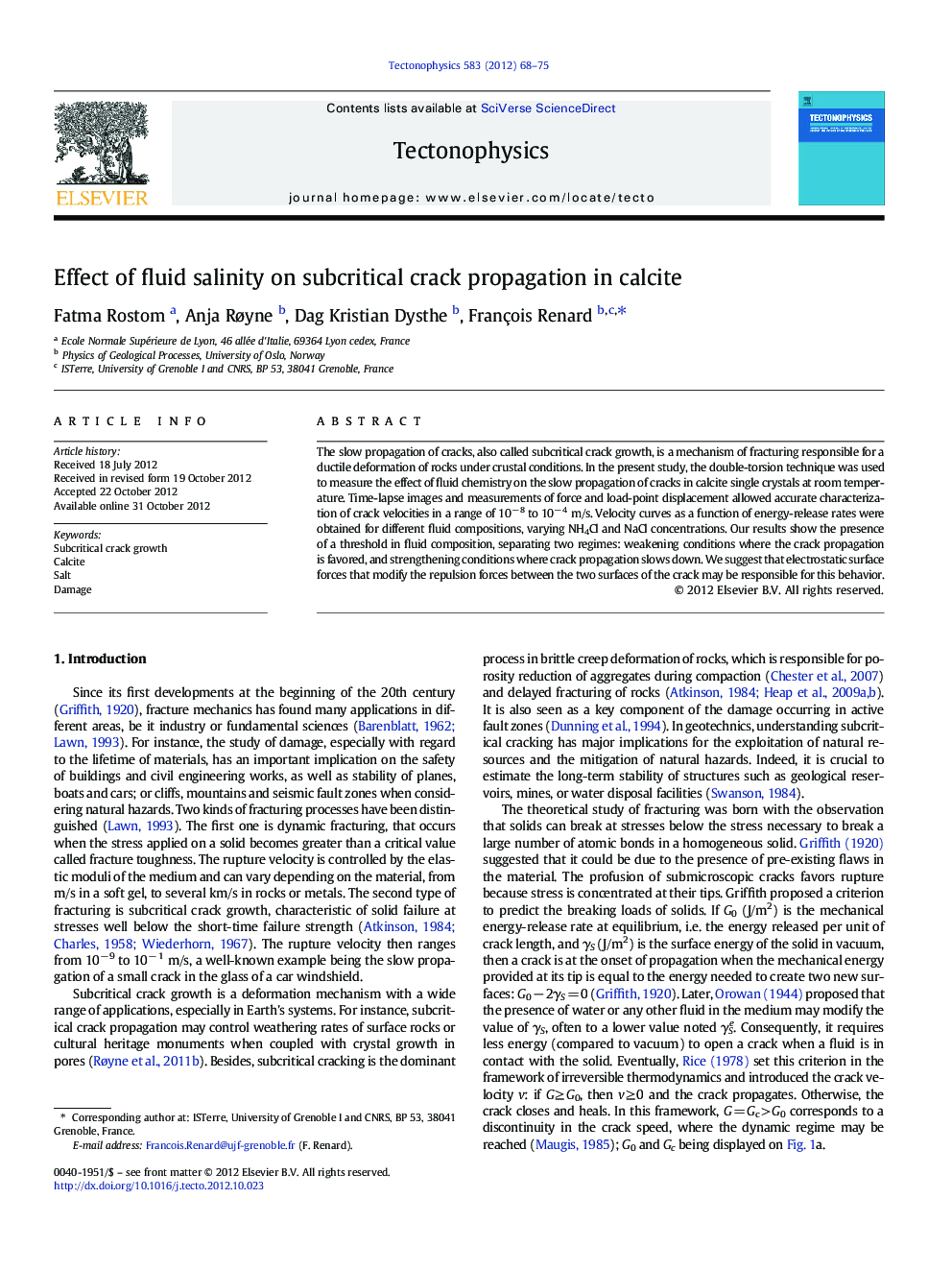| Article ID | Journal | Published Year | Pages | File Type |
|---|---|---|---|---|
| 6434168 | Tectonophysics | 2013 | 8 Pages |
The slow propagation of cracks, also called subcritical crack growth, is a mechanism of fracturing responsible for a ductile deformation of rocks under crustal conditions. In the present study, the double-torsion technique was used to measure the effect of fluid chemistry on the slow propagation of cracks in calcite single crystals at room temperature. Time-lapse images and measurements of force and load-point displacement allowed accurate characterization of crack velocities in a range of 10â 8 to 10â 4 m/s. Velocity curves as a function of energy-release rates were obtained for different fluid compositions, varying NH4Cl and NaCl concentrations. Our results show the presence of a threshold in fluid composition, separating two regimes: weakening conditions where the crack propagation is favored, and strengthening conditions where crack propagation slows down. We suggest that electrostatic surface forces that modify the repulsion forces between the two surfaces of the crack may be responsible for this behavior.
⺠The slow propagation of crack in calcite (i.e. subcritical rupture) was measured. ⺠Velocities in the range 10â 4 to 10â 8 m/s were observed. ⺠A significant effect of fluid salinity was identified.
